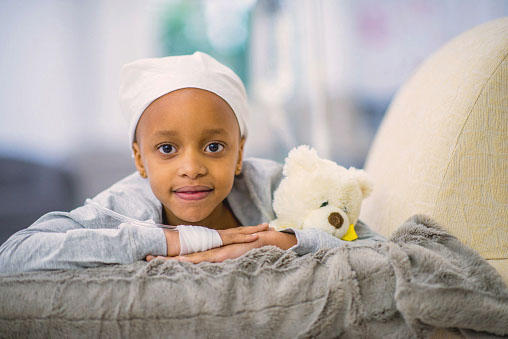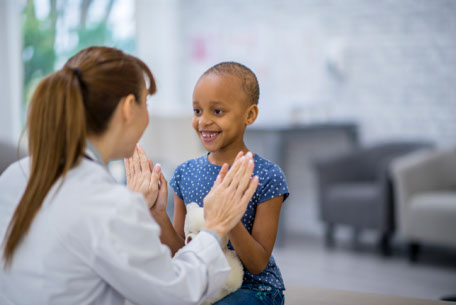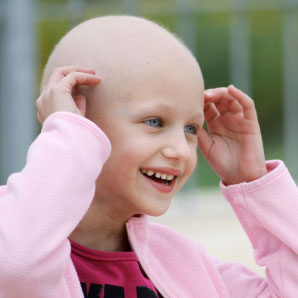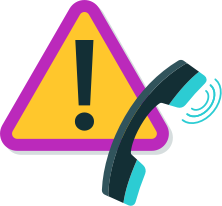 Hair Loss
Hair LossHair Loss
Potential causes of hair loss
Chemotherapy and radiation therapy used in the treatment of neuroblastoma may cause hair loss or thinning of the hair. The specific type of chemotherapy and location of radiation therapy determines how likely this is.
Hair loss can begin as soon as 7 to 10 days after treatment has started. Hair on other parts of the body may also be affected (eyebrows, eyelashes, and body hair).
 Treating hair loss
Treating hair lossTreating hair loss
Unfortunately, there is no way to prevent your child’s hair from falling out after they receive certain types of chemotherapy or radiation. When their hair is actively falling out it may bother them or make them feel itchy. Some children and parents prefer to have the child's hair cut as short as possible when hair starts to fall out. Some feel this can make it easier to manage.
Coping with hair loss
Hair loss may be emotional for you and your child. It may be helpful to talk to your child about how they feel about losing their hair and make sure they understand that it does grow back after treatment. Many children choose special hats or head coverings to make them feel comfortable and keep their head warm.
Seeing other kids who are bald may help them feel more “normal”. Talk to your hospital child life specialist or social worker about books (with bald characters), toys (bald dolls or action figures), wigs, or other resources available to help your child adapt.
 Coping with hair loss
Coping with hair lossHow soon will my child’s hair grow back?
Your child’s hair will usually grow back a few months after the neuroblastoma treatments become milder or when they are finished. When your child’s hair grows back after treatment it may be slightly different than before—curlier, thicker, thinner, or a different color.

Please talk with your child’s healthcare team if your child has any difficulty coping with changes to their appearance or hair loss.
Learn about the signs and symptoms of other common side effects of treatment and how the healthcare team may manage each.